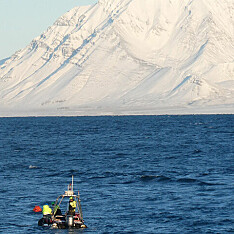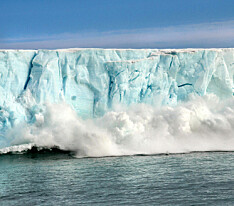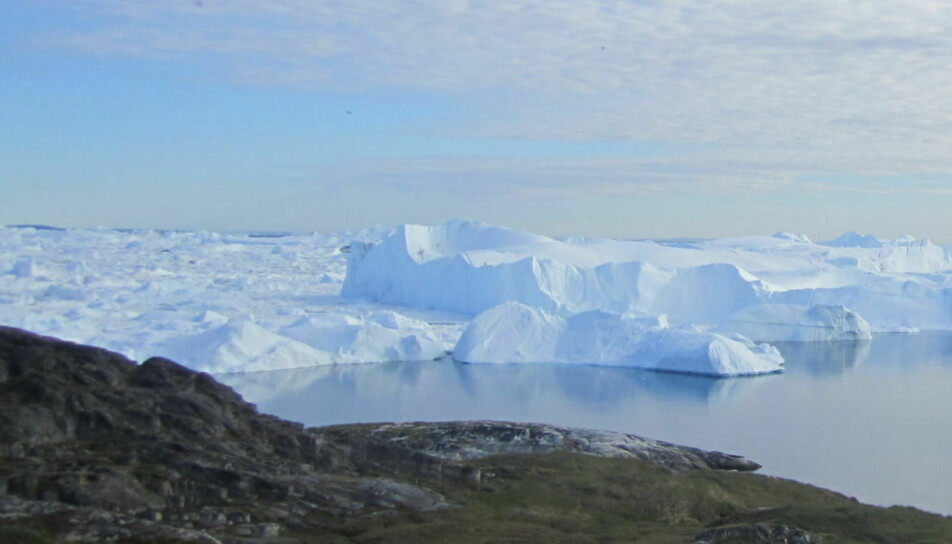
What’s happening with the ‘doomsday glacier’ in Antarctica?
The Thwaites Glacier is a wild card when it comes to sea level rise, researchers say. A new study describes the glacier’s movements in the past.
The Thwaites Glacier is a huge ice mass the size of Great Britain located in West Antarctica.
In recent years, scientists have seen that something is about to happen to the glacier. Large cracks have opened in the ice shelf, which is the floating extension of the glacier.
At the same time, warm ocean water is attacking an underwater zone, where several hundred metres of ice rest on bedrock.
The Thwaites Glacier is the area in Antarctica that is changing the most, according to the US/British research collaborative The International Thwaites Glacier Collaboration.
The glacier loses 50 billion tonnes of ice annually.
In a new study in Nature Geoscience, researchers have found evidence on the seabed that tell them what has happened to the glacier in earlier times. It turns out that it has also retreated rapidly in the past.
Doomsday Glacier?
The Thwaites Glacier is also called the ‘doomsday glacier’, after the title of an article that appeared in Rolling Stone magazine in 2017.
The nickname comes from the fact that if the glacier collapses, it will raise the sea level by a considerable amount. If the entire glacier melts, that alone will raise the sea level by 65 centimetres. This could destabilize the ice in the rest of West Antarctica, which could result in up to 3.3 meters of sea level rise.
If that happens, the world's coastlines will be changed radically.
Ice loss from the glacier may accelerate within a few decades. But a possible collapse of the glacier and the surrounding ice will take several centuries, according to an article from CIRES that was published by the international team that is studying the glacier.
These scientists don’t use the term ‘doomsday glacier’, because it sends the message that this disaster will happen suddenly and is inevitable, which is not the case.
Nevertheless, scientists are trying to learn more about how the glacier will change in the future and how much the Thwaites will contribute to sea level rise.
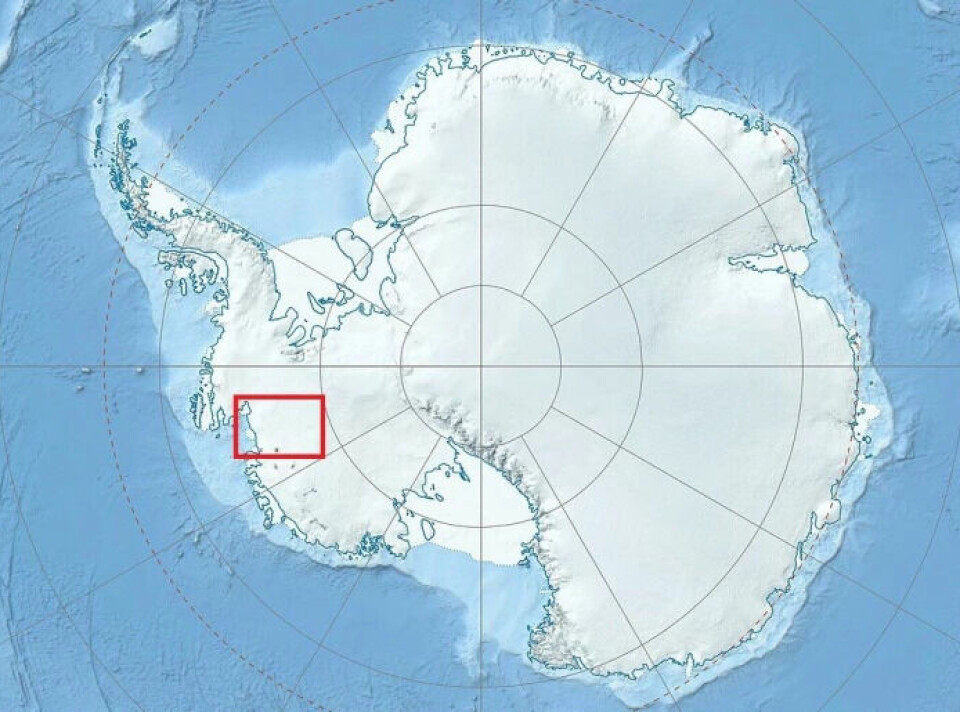
A wild card
The Thwaites now accounts for four per cent of all annual sea level rise. This contribution may increase in the future.
“Thwaites is one of the big wild cards when it comes to sea level in the future,” says Elin Darelius, a professor of oceanography at the University of Bergen and the Bjerknes Centre for Climate Research.
She has been on several trips to Antarctica to study the ice.
Retreating slowly towards the shore
Much of the bedrock in West Antarctica lies below sea level. The ice sheet rests on what was once the sea floor, according to an article in The Conversation.
The bedrock on which Thwaites is located is also below sea level.
Ice that is several hundred meters thick meets seawater where the glacier ‘flows’ into the Amundsen Sea.
The ice in Antarctica is not completely fixed and stagnant. It is quite plastic, Katrine Husum said to sciencenorway.no. Husum is a researcher at the Norwegian Polar Institute.
As with mountain glaciers, glacial ice slowly creeps downwards from the highest zones and towards the coast.
“You have snow that falls on it in the winter and remains. In the summer, some of it melts away,” says Husum.
Snow piles up on the glaciers and turns into more ice. Down at the coast, icebergs break off where the glacier meets the sea. The glacier also melts or is melted from the underside by seawater, which carries heat with it.
In some places in Antarctica, this delicate dance is out of balance. More ice is lost than is added.
Cracking up
Research in recent years has shown that the Thwaites Glacier is changing in several ways.
The ice shelf itself is about to crack and collapse.
“Antarctica is a continent with a very thick ice cap, which is slowly sliding out towards the coast. At some point the sea becomes so deep or the ice so thin that it can float. Then we call it an ice shelf,” says professor Darelius from the Bjerknes Centre.
Ice shelves can be several hundred metres thick, most of which is underwater. They extend from the continent like the brim of a hat.
Large cracks have appeared in the Thwaites Glacier’s ice shelf.
At a press conference in 2021, scientists from The International Thwaites Glacier Collaboration said that it is likely that the shelf will collapse within five to ten years.
In that case, it would not be the first time it has happened in Antarctica.
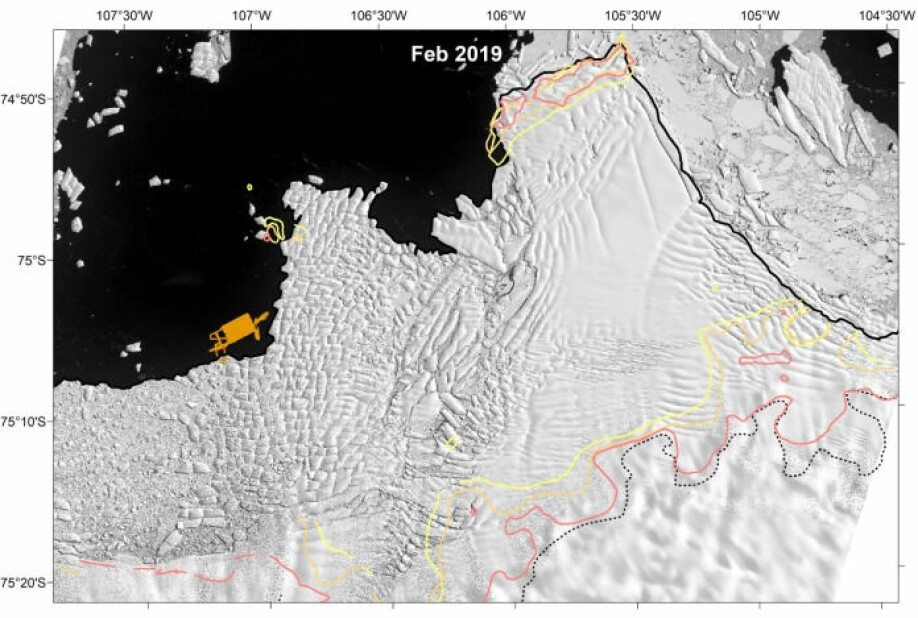
The brake releases
In 2002, an ice shelf called Larsen B collapsed within three weeks.
Its little brother, Larsen A, disintegrated in 1995. Other ice shelves, such as the Larsen C and the Wilkins, have also lost large chunks. All were located on the Antarctic Peninsula in West Antarctica, where the warming is strongest.
In total, 6.5 trillion tonnes of ice have been lost from ice shelves in Antarctica since the 1990s.
When an ice shelf thins and breaks up, it does not cause sea level to rise, since the ice is already floating on the ocean.
“It's the same as when you have an ice cube in a glass of coca cola. When the ice cube melts, it doesn't matter. The level in the glass remains the same,” Darelius said.
Ice shelves that break up can still play a role in determining how large the sea level rise will be.
Ice shelves support and slow down the glaciers. As they disappear, ice in the interior of Antarctica may begin to flow out faster.
“If the ice that is on the land moves faster towards the sea, then the sea will rise,” Darelius said.
This happened after the Larsen B shelf collapsed. Glaciers that were behind it began to flow eight times faster towards the sea.
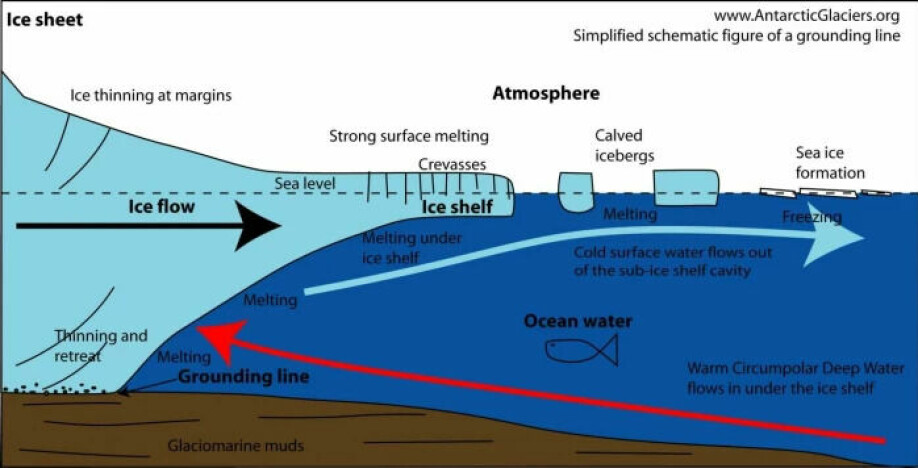
Water penetrates under the foot of the glacier
The ice shelf thickens and slopes towards the glacier where it rests on the bedrock under water.
The point where the ice is in contact with the bedrock is called the grounding line.
Water, which carries heat, flows under the ice shelf and eats away at the glacier from below.
Scientists have measured the temperature at the grounding line of Thwaites. They found that the water here remains a couple of degrees above freezing, which is more than enough to eat away at the ice.
“Then the ice shelf melts quickly from the underside, and the grounding line slowly migrates back towards the continent,” Darelius said.
This means that the zone where the glacier is on solid ground constantly retreats backwards.
The glacier is retreating backwards several hundred metres a year. It has retreated 14 kilometres since 1992.
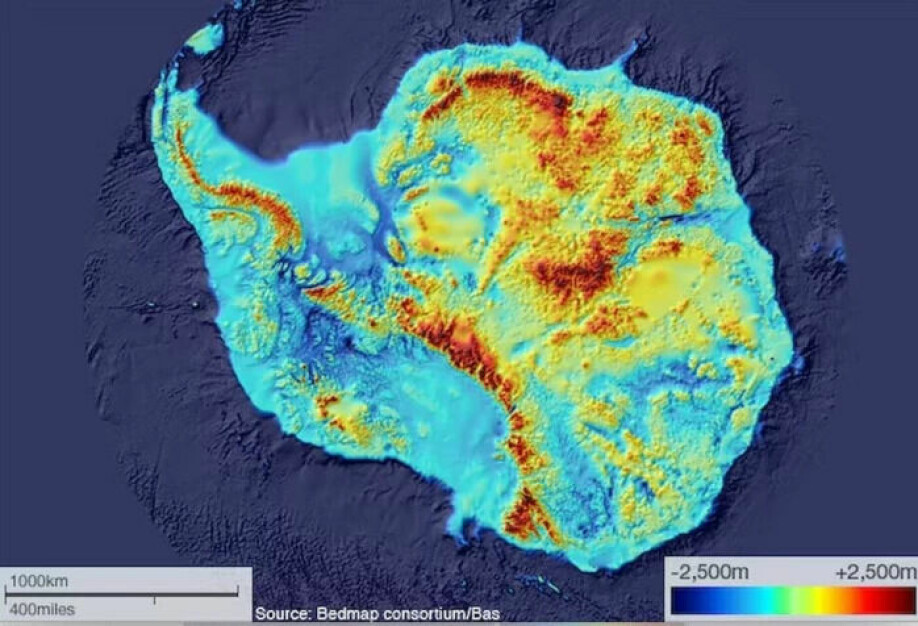
On top of a hill
One of the scary things about Thwaites is that the bedrock beneath the glacier deepens towards the continent.
“The bedrock slopes towards the land. Think of it as if the glacier is on top of a hill,” the Norwegian Polar Institute’s Husum said.
“If it suddenly slips and slides down, then that’s a problem because the ice loss can be accelerated,” she said.
As warmer water melts the glacier from below and moves the grounding line backwards, thicker and thicker ice will be lifted from the substrate and could break off. Ice that was on land also ends up in the sea, as explained in a video from the Thwaites collaboration.
The grounding line is now approximately 600 metres below sea level, Darelius said. Further south, towards the continent, the ice is resting on bedrock that is 1,200 metres below sea level.
One can imagine Thwaites as a giant soup bowl filled with ice, as the Rolling Stone article described it.
“If the grounding line moves backwards in the basin, things can happen quite quickly, then much of the glacier can become an ice shelf,” Darelius said.
Have taken pictures of the seabed
There are different models for how fast it can go. The processes at the grounding line are not fully understood, Husum said.
Consequently, she’s excited about the new study in Nature Geoscience, which shows how the glacier has reacted in the past.
Scientists have used an underwater vessel to take detailed pictures of the seabed rather than the glacier. They have looked at a raised area on the sea floor they called The Bump.
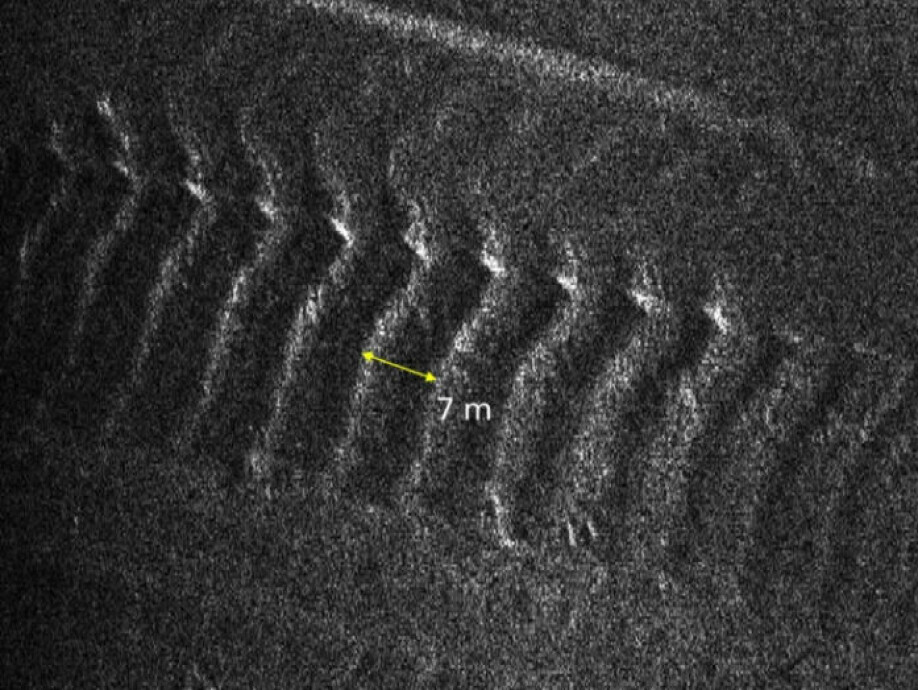
Tossed with the tide
The researchers discovered grooves on the seabed that were typically 20 centimetres high and spaced seven metres apart.
The researchers found that the pattern matched the tides. The grooves were made when the former grounding line receded and at the same time bobbed up and down daily with the tide.
“Every time the glacier was lifted by the tide and receded, it made a small bump on the bottom. They are larger when there is a spring tide. Then the researchers can see exactly how the grounding line moved backwards day by day,” Darelius said.
The researchers also saw that at least once every 200 years, the glacier suddenly retreated faster. It retreated at a rate of 2.1 kilometres per year over a period of less than six months. That’s twice as quickly as today.
Cautiously optimistic
“It is an incredibly exciting study with super important data that helps us understand these processes. The most important thing is that they have seen how quickly the glacier can retreat,” says the Norwegian Polar Institute’s Husum.
What do scientists think about the future of the glacier? Are they worried?
“I am worried, but I’m also hopeful that we limit our CO2 emissions, in which case there is perhaps a chance that we can maintain the status quo. I am worried, but cautiously optimistic,” Husum said.
Translated by Nancy Bazilchuk
Reference:
Alastair G. C. Graham et.al.: Rapid retreat of Thwaites Glacier in the pre-satellite era. Nature Geoscience, 2022.
———
Read the Norwegian version of this article at forskning.no
_ _ _









